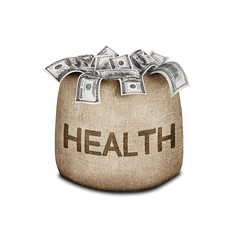How this new trend is changing the face of exercising?
MEDIA RELEASE: Monday 10 June 2013
FROM: The New Zealand Register of Exercise Professionals (REPs)
It’s easy to get confused about whether new trends in fitness are worth investigating. After all it seems every week there is a new piece of equipment on sale in the stores promising to get amazing results, or a new reality TV programme showing some celebrity with a range of new tricks to whip people into shape. But not all fitness trends are fads; in fact there is some amazing research being undertaken in exercise and fitness that we don’t see on infomercials, but will make a difference to the way you train.
HIIT (High Intensity Interval Training) is one of those trends. But let’s put that word to the side. A trend is something that comes quickly into fashion and gets replaced by something new just as fast. HIIT is here to stay, and is changing the way we exercise and the results we get.
For a start, what is HIIT? HIIT stands for High Intensity Interval Training and is a type of training that combines hard work periods of exercise, with less intense recovery periods in an interval format. Our bodies are not designed to work at high intensity for extended periods so combining the work and active recovery means we can work at a much harder level as we have time to rest.
One of the key benefits to this type of training is that it is fast; a great session that will have some great benefits can be completed in less than 30 minutes. This makes it much more achievable than a group exercise class, or an hour on the cross trainer for those with time constraints.
What does it involve? There are many styles of HIIT training; some very well known ones include ‘cross fit’ and ‘tabata’, but HIIT is not limited to these formats. Cross fit can involve equipment you would see in the average gym, but can also use no equipment whatsoever. This is another advantage of HIIT training – it’s something you can do almost anywhere.
Health benefits
There is research to back up the effectiveness of high intensity training vs the more traditional way we have got our heart rate up in the past. The latest research suggests that high intensity workouts can be just as beneficial as longer, steadier state workouts. In a study on children, Duncan Buchan from the University of West Scotland found that the benefits gained from shorter bursts of exercise were just as effective at reducing the risk of cardiovascular disease, BUT these benefits occurred with a much shorter workout time.
Risks and how to mitigate
As with all exercise and sports there is some risk involved, and HIIT is no different. When embarking on an HIIT style programme, you want to make sure you are doing exercises and working at an intensity that is right for you. The best way to ensure this is to work with someone who can support you along the way, someone who can be present and supporting you as you workout, rather than following a video on the internet or having a friend share what they do.
Choosing just who is qualified enough to assist you can be a difficult task; some trainers may look great in their gym gear, but this does not mean that they necessarily know their stuff. The safest way to ensure you get the best advantage of this new type of training is to only work with a REPs Registered Exercise Professional. Registration with REPs is the recognised standard in New Zealand, and the only certain way to ensure you are getting both a safe and effective HIIT workout.






